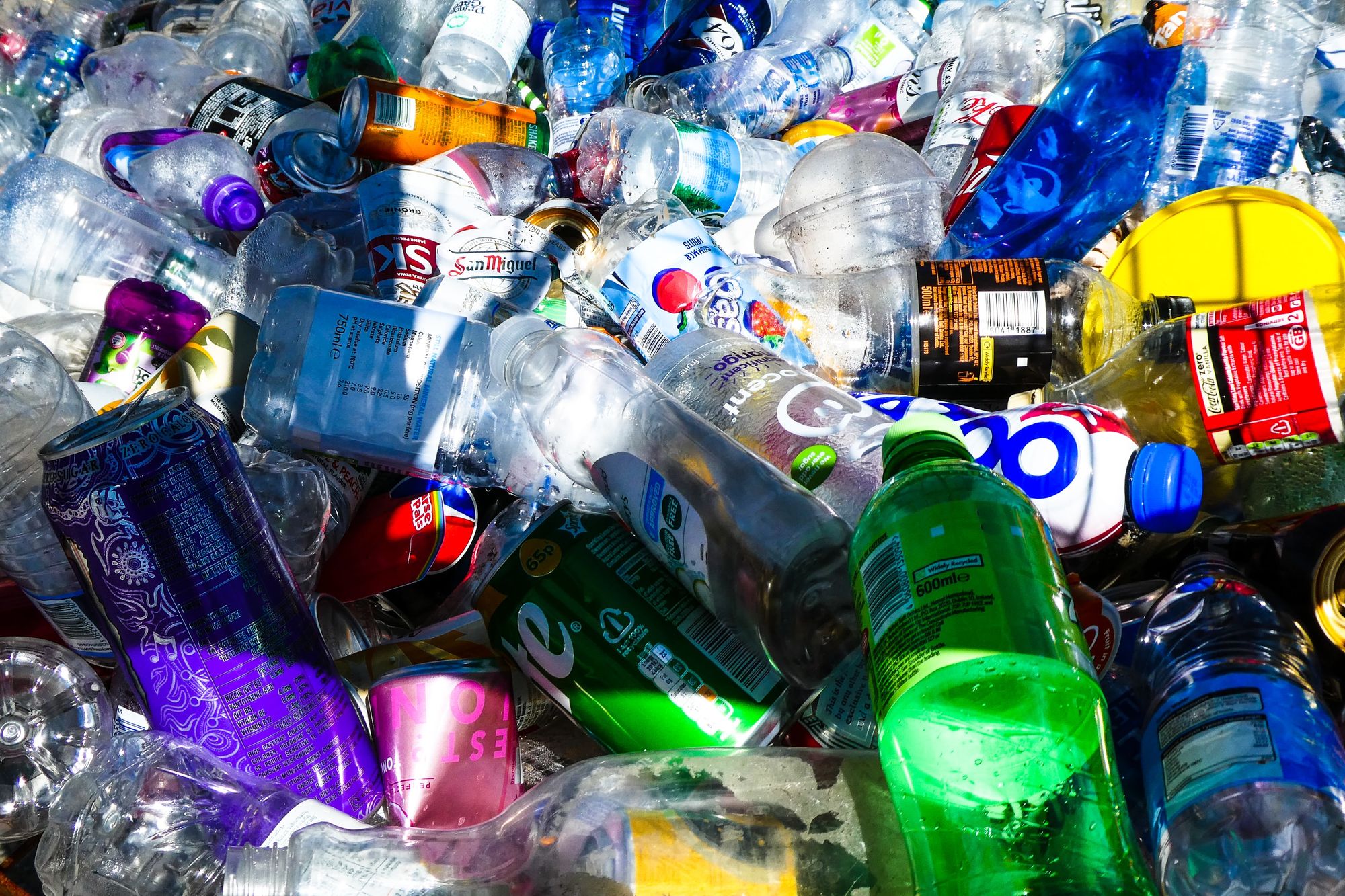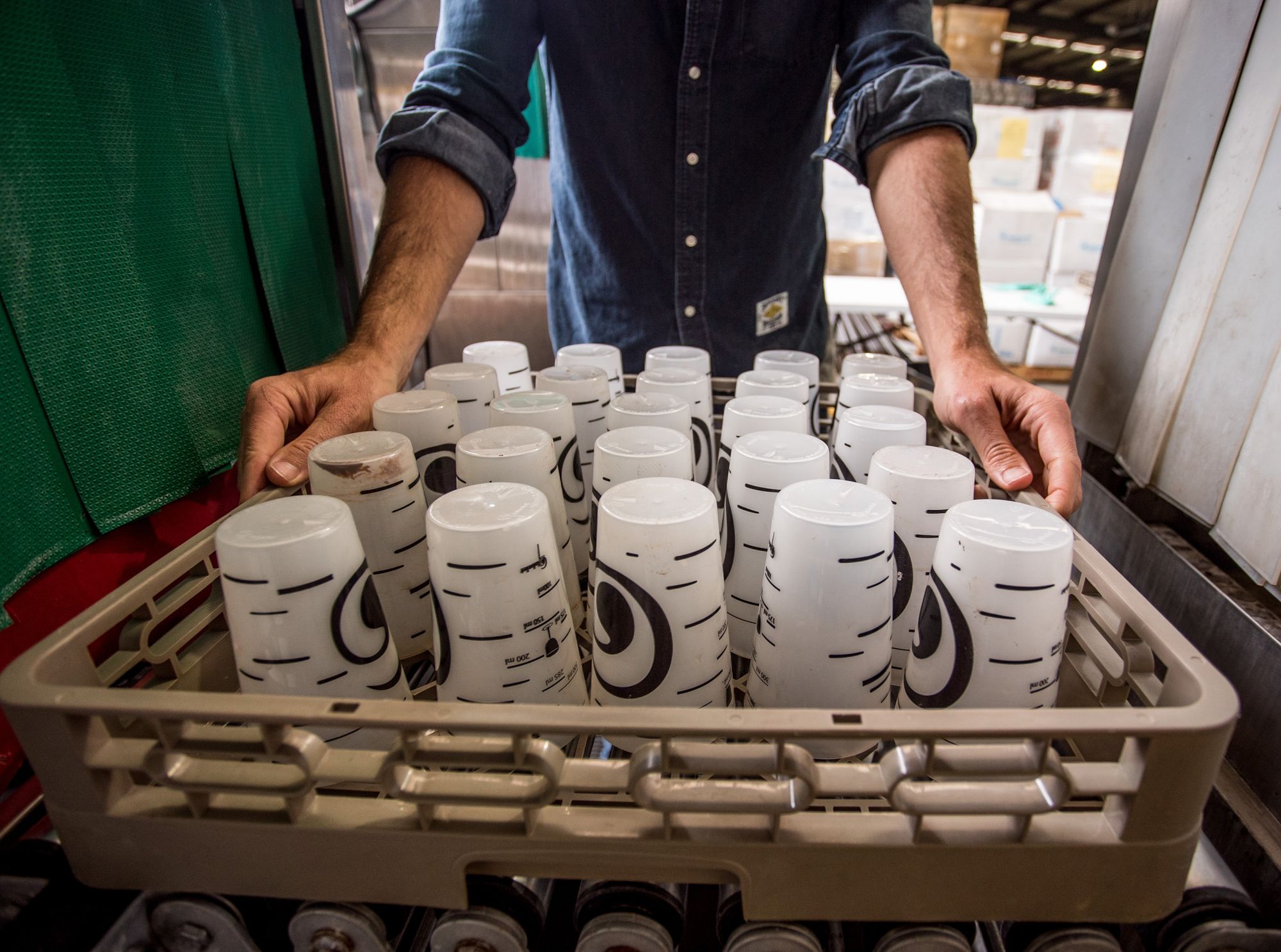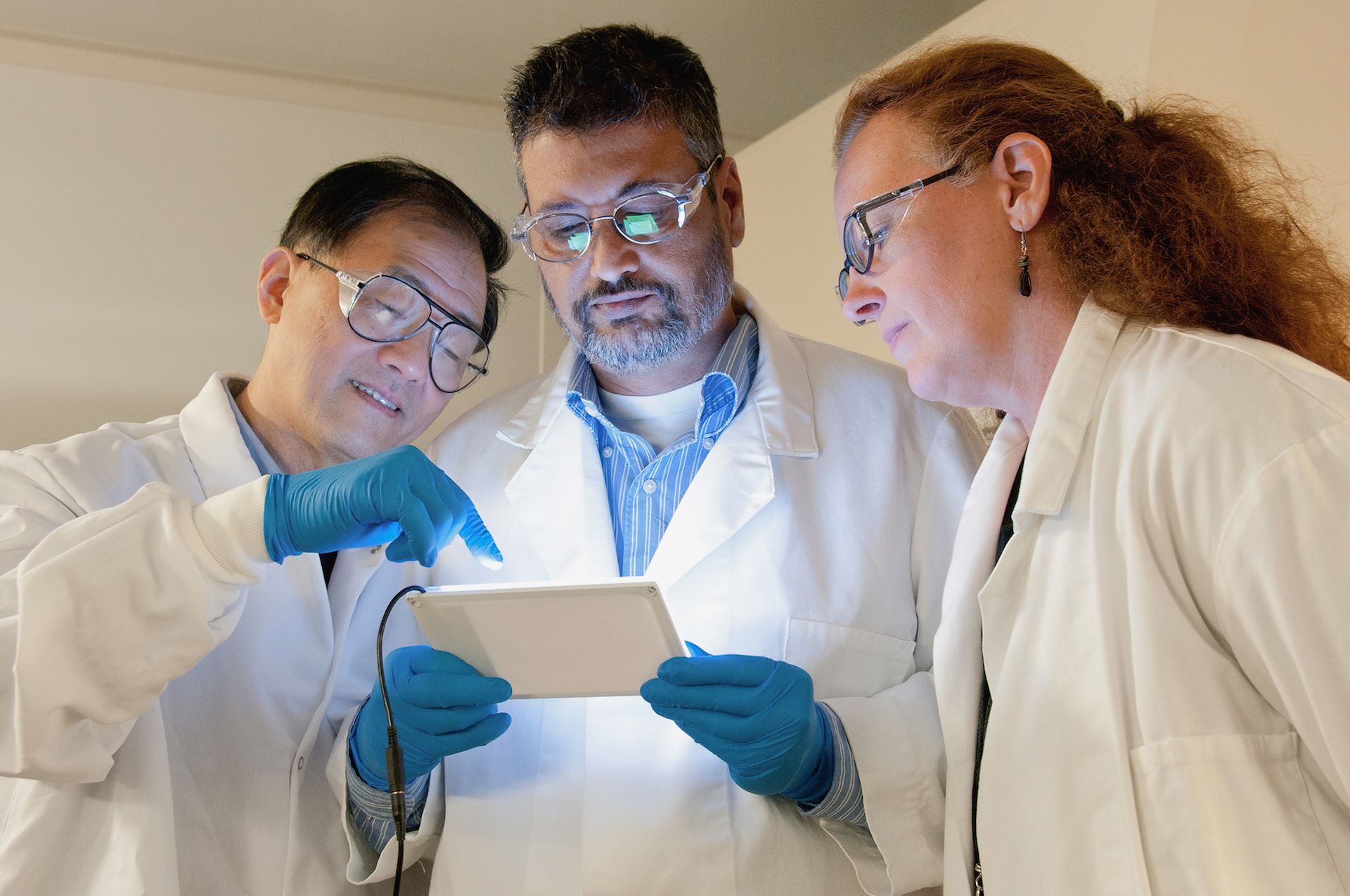Plastic manufacturing has revolutionized the modern world, offering convenience and durability to consumers across a variety of industries. However, the environmental impact of plastic manufacturing must be addressed.
In recent years, there has been a growing concern about the long-term impact of plastic waste on the environment. According to the Environmental Protection Agency (EPA), in 2018, the United States generated 35.7 million tons of plastic waste, with only 9.5% of it being recycled.
This means that a significant amount of plastic waste ends up in landfills or oceans, where it can take hundreds of years to degrade, causing harm to wildlife and ecosystems.
The manufacturing process itself also has a significant environmental impact. Plastic production involves using non-renewable resources such as oil and natural gas, which are often extracted using environmentally destructive methods. The production process also releases harmful greenhouse gases such as carbon dioxide and methane, contributing to climate change.
There is a growing demand for more sustainable and environmentally friendly manufacturing practices in the plastic industry. Many companies are turning to eco-friendly alternatives such as bioplastics made from renewable resources such as cornstarch or sugarcane.

In this article, we will explore the environmental impact of plastic manufacturing in more detail and discuss the various methods and technologies that are being developed to mitigate this impact.
Here's what we shall cover in this post:
- Understanding the Plastic Waste Crisis: An Overview
- Environmental Regulations and Their Impact on Plastic Manufacturing
- Strategies for Reducing the Environmental Footprint of Plastic Production
- Innovations in Recycling Technologies for Plastic Waste
- Alternative Materials to Plastic: Prospects and Limitations
- Corporate Social Responsibility in the Plastic Manufacturing Industry
- The Role of Consumers in Addressing the Plastic Crisis
- Conclusion
- Key Takeaways
Understanding the Plastic Waste Crisis: An Overview
Plastic waste has become a global environmental crisis, as it is a significant source of pollution and poses a threat to the world's ecosystems. Here is an overview of the plastic waste crisis in simple sentences:
- Plastic waste is a significant environmental problem that is affecting the planet's health.
- It is estimated that there are over 8 billion tons of plastic waste on the planet, with only 9% of it being recycled.
- Plastic waste harms the environment, wildlife, and human health in various ways, including entanglement, ingestion, and pollution.
- Plastic pollution can affect both marine and terrestrial environments, and it has been found in all corners of the globe, including the Arctic and the deepest parts of the ocean.
- Single-use plastics, such as bags, straws, and food packaging, are a significant contributor to the plastic waste crisis.
- The plastic waste crisis also has economic implications, as it affects tourism, fisheries, and other industries that rely on clean environments.
- Governments, businesses, and individuals are working to address the plastic waste crisis through policies, regulations, and initiatives to reduce plastic consumption, increase recycling, and develop new technologies for sustainable plastic production and waste management.
- To address the plastic waste crisis, it is essential to understand the root causes, such as the over-reliance on single-use plastics and the lack of proper waste management infrastructure.
- Education and awareness are also essential to help individuals and communities understand the impact of plastic waste and take action to reduce their plastic footprint.
- The plastic waste crisis is a complex problem that requires a collaborative and comprehensive approach to address it.
Ecological Consequences of Plastic Pollution
Plastic pollution is a growing problem that is causing significant ecological consequences. Here are some of the ways plastic pollution is impacting the environment:
- Harm to marine life: Plastic waste in the oceans can cause harm to marine animals, such as sea turtles and birds, that mistake plastic for food. This can lead to ingestion, choking, and entanglement.
- Microplastic pollution: Plastic debris can break down into tiny particles known as microplastics, which can harm marine organisms and enter the food chain.
- Impact on soil and landfills: Plastic waste that ends up in landfills can take hundreds of years to decompose and can release harmful chemicals into the soil and groundwater.
- Pollution of freshwater resources: Plastic waste entering freshwater resources, such as rivers and lakes, can cause pollution and harm aquatic ecosystems.
- Carbon emissions: The production and transportation of plastic products and the disposal of plastic waste can contribute to carbon emissions and contribute to climate change.
- Economic impact: Plastic pollution can have economic consequences, such as lost revenue for the fishing and tourism industries due to the harm caused to marine ecosystems.
- Health impact: There is growing concern about the impact of plastic pollution on human health, as chemicals from plastic waste can enter the food chain and harm human health.
Environmental Regulations and Their Impact on Plastic Manufacturing
Plastic manufacturing has become a significant contributor to environmental pollution and degradation. As a result, governments worldwide are implementing environmental regulations to mitigate the negative impacts of plastic manufacturing on the environment.
In this section, we'll discuss some of the environmental regulations and their impact on plastic manufacturing.
Product Design Requirements
Product design requirements are implemented to ensure that products are designed to reduce waste and improve their recyclability. This regulation requires plastic manufacturers to design products that can be easily recycled, reused, or repaired. This regulation also requires the use of sustainable materials in the manufacturing process.
Extended Producer Responsibility
Extended Producer Responsibility (EPR) is a policy that holds manufacturers responsible for the entire lifecycle of their products. This regulation requires manufacturers to take responsibility for their products' disposal and recycling after the end of their useful life.
EPR regulations are designed to promote recycling and reduce waste by incentivizing manufacturers to design products that can be recycled and reused.
Waste Management Regulations
Waste management regulations aim to reduce the amount of waste produced by plastic manufacturing. This regulation requires manufacturers to implement waste management practices that reduce the amount of waste produced during the manufacturing process.
This includes implementing practices such as waste reduction, recycling, and reusing.
Carbon Emission Regulations
Carbon emission regulations are implemented to reduce the greenhouse gas emissions produced by plastic manufacturing. This regulation requires manufacturers to implement practices that reduce their carbon footprint, such as using renewable energy sources and implementing energy-efficient manufacturing practices.
Bans on Single-Use Plastics
Bans on single-use plastics are implemented to reduce the amount of plastic waste produced by the manufacturing industry. This regulation prohibits the use of single-use plastics such as plastic bags, straws, and cutlery.
The impact of these regulations on the plastic manufacturing industry varies depending on the regulation and its implementation. While some regulations may increase manufacturing costs, others may incentivize manufacturers to adopt more sustainable practices, leading to long-term cost savings.
Strategies for Reducing the Environmental Footprint of Plastic Production
Here are some strategies that can help to achieve this goal:
- Use sustainable raw materials: One of the best ways to reduce the environmental impact of plastic production is to use sustainable raw materials. This includes materials that are derived from renewable sources, such as plant-based bioplastics, rather than petroleum-based plastics.
- Adopt closed-loop systems: Another strategy for reducing the environmental impact of plastic production is to adopt closed-loop systems, where plastic waste is collected and recycled to create new products. This can help to minimize the amount of plastic waste that ends up in landfills and oceans.
- Increase energy efficiency: Plastic production requires significant energy, which can contribute to greenhouse gas emissions. Increasing energy efficiency in the production process makes it possible to reduce the amount of energy required to produce each unit of plastic, thus reducing greenhouse gas emissions.
- Reduce water usage: Plastic production also requires a significant amount of water, which can put a strain on water resources. By reducing water usage in the production process, it is possible to conserve water resources and reduce the environmental impact of plastic production.
- Implement waste reduction strategies: In addition to recycling plastic waste, it is crucial to implement waste reduction strategies in the production process itself. This can include minimizing the amount of plastic used in each product and implementing strategies to reduce the amount of plastic waste generated during the production process.
- Adopt eco-friendly packaging: Plastic packaging is a significant contributor to environmental pollution. By adopting eco-friendly packaging solutions, such as biodegradable or compostable packaging, it is possible to reduce the environmental impact of plastic packaging.
- Increase public awareness: Finally, it is vital to increase public awareness about the environmental impact of plastic production. This can include educating consumers about the importance of recycling and waste reduction and promoting sustainable alternatives to traditional plastic products.
Role of Bioplastics in Sustainable Manufacturing
Bioplastics offer a sustainable alternative to conventional plastics, potentially significantly reducing the environmental footprint of plastic production. Here are some points that outline the role of bioplastics in sustainable manufacturing:
- Bioplastics are made from renewable resources: Unlike conventional plastics, which are made from non-renewable resources like crude oil, bioplastics are made from renewable resources like corn starch, sugarcane, or vegetable fats and oils. This makes them a more sustainable alternative.
- Bioplastics can be biodegradable: Some types of bioplastics are designed to biodegrade in certain conditions, meaning they break down into natural substances like water, carbon dioxide, and biomass. This reduces the amount of plastic waste that ends up in landfills and oceans.
- Bioplastics can reduce greenhouse gas emissions: The production of conventional plastics is a significant contributor to greenhouse gas emissions. Bioplastics have the potential to reduce these emissions, as they require less energy to produce and can be made from renewable resources.
- Bioplastics can be recycled: Bioplastics can be recycled along with conventional plastics, which means that they can be used to create new products and reduce the demand for new plastic production.
- Bioplastics can be used in a variety of applications: Bioplastics can be used in a wide range of applications, from packaging materials to automotive components. This means they can replace conventional plastics in many different industries.
- Bioplastics are not a panacea: While bioplastics offer many benefits, they are only a partial solution to the plastic waste crisis. Bioplastics still require resources to produce and dispose of, and some types of bioplastics may not be biodegradable or recyclable.
Innovations in Recycling Technologies for Plastic Waste
Recycling is a crucial step toward reducing the environmental impact of plastic waste, but traditional recycling methods have limitations. Innovations in recycling technologies are constantly being developed to address these limitations and create a more sustainable solution for plastic waste.
Here are some of the latest innovations in recycling technologies for plastic waste:
Chemical Recycling
This technology involves breaking down plastics into their molecular components through various chemical processes. The resulting materials can be used as feedstocks for new plastics or other products.
Chemical recycling has the potential to significantly increase the amount of plastic waste that can be recycled, including mixed and contaminated plastics.
Pyrolysis
Pyrolysis involves heating plastic waste in the absence of oxygen to break it down into smaller molecules that can be used to create new products. This process has the potential to convert plastic waste into valuable resources, such as fuel, chemicals, and carbon black.
Mechanical Recycling
This is the traditional method of recycling plastics, which involves shredding and melting plastics to create new products. Innovations in mechanical recycling include improved sorting technologies to separate different types of plastics and the development of new materials that can be recycled multiple times without losing their properties.
Biodegradable Plastics
Biodegradable plastics are designed to break down into natural substances when exposed to certain environmental conditions. Innovations in this area include the development of biodegradable plastics that are more durable and can be used in a wider range of applications.
Upcycling
Upcycling involves turning plastic waste into high-quality products that have a higher value than the original waste. Innovations in upcycling include using plastic waste to create building materials, furniture, and fashion accessories.
Alternative Materials to Plastic: Prospects and Limitations
In recent years, there has been increasing concern about the environmental impact of plastic and a growing interest in finding alternatives to traditional plastic materials.
While plastic has many advantages, including being lightweight, durable, and versatile, it also has significant drawbacks, such as contributing to pollution and harming wildlife.
In response to these concerns, researchers and manufacturers are exploring a range of alternative materials to plastic. Here are some of the most promising alternatives, as well as their pros and cons:
- Natural materials: Natural materials such as wood, bamboo, and cork are being explored as alternatives to plastic in some applications. These materials are renewable, biodegradable, and have a lower environmental impact than plastic. The pros of natural materials include their biodegradability, renewable nature, and aesthetic appeal. However, they may not be as durable or versatile as plastic and may not be suitable for all applications.
- Glass: Glass is a versatile and durable material that can be used in a wide range of applications, including food and beverage packaging. Glass is also infinitely recyclable and has a low environmental impact. The pros of glass include its recyclability, durability, and versatility. However, it is heavier and more brittle than plastic, making it less suitable for some applications.
- Metal: Metal is another durable and versatile material that can replace plastic in some applications. Metals such as aluminum and steel are lightweight, strong, and can be recycled indefinitely. The pros of metal include its recyclability, durability, and strength. However, metal can be more expensive than plastic and may not be suitable for all applications.
- Paper and cardboard: Paper and cardboard are renewable, biodegradable, and have a low environmental impact. They can be used in a wide range of applications, including food and beverage packaging. The pros of paper and cardboard include their biodegradability, renewable nature, and affordability. However, they may not be as durable or versatile as plastic and may not be suitable for all applications.
While each of these materials has its advantages and disadvantages, the move towards finding alternatives to plastic is an essential step in reducing the environmental impact of manufacturing and consumption.
As technology and innovation continue to evolve, more and better alternatives will likely emerge, making it easier for manufacturers and consumers to reduce their reliance on plastic.
Corporate Social Responsibility in the Plastic Manufacturing Industry
Corporate Social Responsibility (CSR) has become increasingly important in the plastic manufacturing industry as businesses recognize their impact on society and the environment. Here are some key points about CSR in the plastic manufacturing industry:
Definition of CSR: CSR refers to a company's voluntary actions to achieve social, environmental, and economic benefits for stakeholders beyond legal requirements. CSR can include activities such as sustainable sourcing, reducing waste and emissions, promoting employee well-being, and supporting community development.
Importance of CSR in the plastic industry: Plastic manufacturing has been criticized for its impact on the environment, particularly in terms of plastic waste and pollution. Companies can help mitigate these negative effects and improve their reputation by implementing CSR practices.
Key areas of CSR in plastic manufacturing: Some key areas of CSR in the plastic manufacturing industry include reducing waste and emissions, using sustainable and eco-friendly materials, promoting recycling and reuse, supporting local communities, and ensuring ethical labor practices.
Examples of CSR initiatives in plastic manufacturing: Many plastic manufacturers have implemented CSR initiatives, such as:
- Using recycled materials in their products
- Implementing sustainable sourcing practices
- Reducing energy consumption and greenhouse gas emissions
- Partnering with community organizations to support environmental and social causes
- Implementing fair labor practices and ensuring employee well-being.
Benefits of CSR in plastic manufacturing: By implementing CSR practices, plastic manufacturers can:
- Improve their reputation and brand image
- Increase customer loyalty and trust
- Reduce costs by implementing sustainable practices
- Improve employee morale and productivity
- Support the communities in which they operate.
Challenges of implementing CSR in plastic manufacturing: Some challenges that plastic manufacturers may face when implementing CSR initiatives include the cost of implementing sustainable practices, finding reliable and sustainable suppliers, and navigating complex regulations.
Future of CSR in plastic manufacturing: As consumers become more environmentally conscious, CSR is likely to become even more important in the plastic manufacturing industry. Companies prioritizing sustainable practices and demonstrating a commitment to CSR will likely be more successful in the long run.
The Role of Consumers in Addressing the Plastic Crisis
The plastic crisis has become a global issue, and it's not just the responsibility of the plastic manufacturing industry to address it. Consumers also play a significant role in reducing plastic waste and pollution. Here are some ways consumers can contribute:
- Reduce plastic usage: Consumers can reduce plastic usage by opting for alternatives such as reusable bags, water bottles, and straws and avoiding single-use plastics like cutlery, cups, and packaging.
- Proper waste disposal: It's crucial to dispose of plastic waste properly, as improper disposal can lead to it ending up in oceans, rivers, and landfills. Consumers should sort their waste and recycle as much as possible.
- Choose products with eco-friendly packaging: Consumers can choose products with eco-friendly packagings, such as those made from biodegradable or compostable materials, or those with minimal packaging.
- Support companies with sustainable practices: Consumers can support companies that prioritize sustainability by choosing products from companies with eco-friendly practices, recycled materials, and waste reduction policies.
- Educate themselves and others: Consumers can educate themselves and others on the plastic crisis and the importance of reducing plastic usage. They can spread awareness through social media, discussions with family and friends, and participating in environmental campaigns.
How Deskera Can Assist You?
Deskera MRP allows you to closely monitor the manufacturing process. From the bill of materials to the production planning features, the solution helps you stay on top of your game and keep your company's competitive edge.

Deskera ERP and MRP system can help you:
- Manage production plans
- Maintain Bill of Materials
- Generate detailed reports
- Create a custom dashboard
Deskera ERP is a comprehensive system that allows you to maintain inventory, manage suppliers, and track supply chain activity in real-time, as well as streamline a variety of other corporate operations.
Deskera Books enables you to manage your accounts and finances more effectively. Maintain sound accounting practices by automating accounting operations such as billing, invoicing, and payment processing.
Deskera CRM is a strong solution that manages your sales and assists you in closing agreements quickly. It not only allows you to do critical duties such as lead generation via email, but it also provides you with a comprehensive view of your sales funnel.
Deskera People is a simple tool for taking control of your human resource management functions. The technology not only speeds up payroll processing but also allows you to manage all other activities such as overtime, benefits, bonuses, training programs, and much more. This is your chance to grow your business, increase earnings, and improve the efficiency of the entire production process.
Conclusion
The environmental impact of plastic manufacturing is a significant concern for our planet's health and well-being. The large-scale production of plastics has led to a massive increase in plastic waste, which has become a major environmental issue, threatening wildlife, ecosystems, and human health.
However, there are ways to mitigate the environmental impact of plastic manufacturing, such as reducing the amount of plastic used, recycling and reusing plastic, and implementing new technologies and sustainable practices in the manufacturing process.
Additionally, public education and awareness campaigns can help people understand the importance of reducing plastic waste and adopting eco-friendly habits. Governments, businesses, and individuals must work together to find innovative solutions and make a concerted effort to reduce the environmental impact of plastic manufacturing.
These steps can help preserve our planet for future generations and create a more sustainable world.
Key Takeaways
- Plastic manufacturing has a significant environmental impact, especially in terms of greenhouse gas emissions and plastic waste generation.
- The manufacturing process requires extracting and processing petroleum, a non-renewable resource and a major contributor to greenhouse gas emissions.
- The production of plastic also requires large amounts of energy, both in terms of electricity and the energy needed to operate machinery and transport materials.
- The disposal of plastic waste is a significant environmental issue, with plastic waste accounting for a large percentage of the world's marine litter and contributing to the degradation of natural habitats.
- Plastic manufacturing companies can reduce their environmental impact by investing in renewable energy sources and reducing waste through recycling and repurposing.
- Recycling is an essential strategy for reducing the environmental impact of plastic manufacturing, but it is important to note that not all plastic is easily recyclable and that recycling rates vary widely by country and region.
- Innovative technologies, such as bioplastics and 3D printing, can reduce the environmental impact of plastic manufacturing by using renewable resources and producing less waste.
- Bioplastics, which are made from renewable resources such as corn starch or sugarcane, can offer a more sustainable alternative to traditional petroleum-based plastics.
- 3D printing has the potential to reduce waste by enabling more efficient and precise manufacturing, as well as allowing for the creation of products with fewer parts and a smaller environmental footprint.
- Governments and regulatory bodies can play a crucial role in reducing the environmental impact of plastic manufacturing by implementing policies and regulations to promote sustainability and reduce waste.
Related Articles













